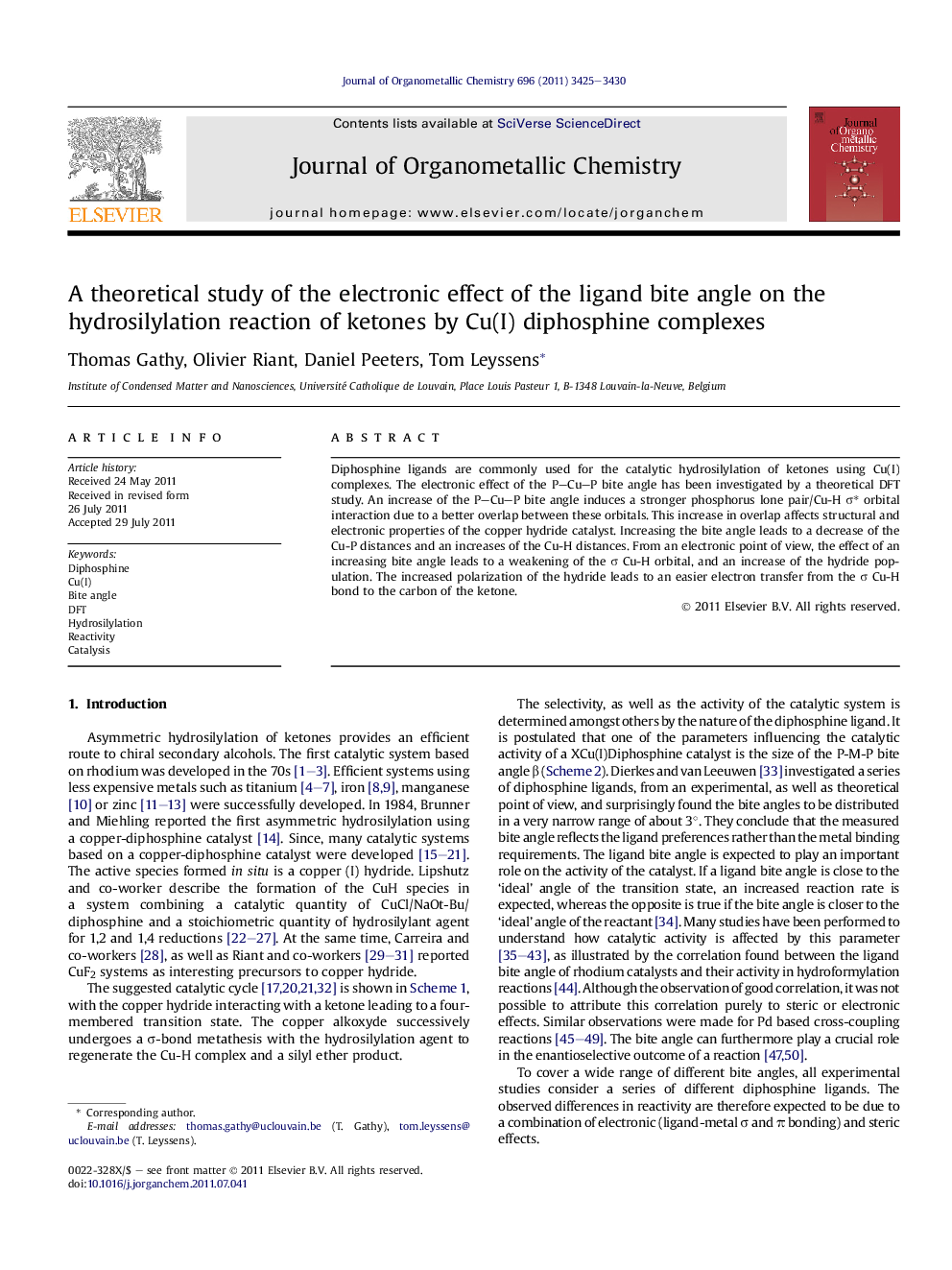| Article ID | Journal | Published Year | Pages | File Type |
|---|---|---|---|---|
| 1323722 | Journal of Organometallic Chemistry | 2011 | 6 Pages |
Diphosphine ligands are commonly used for the catalytic hydrosilylation of ketones using Cu(I) complexes. The electronic effect of the P–Cu–P bite angle has been investigated by a theoretical DFT study. An increase of the P–Cu–P bite angle induces a stronger phosphorus lone pair/Cu-H σ∗ orbital interaction due to a better overlap between these orbitals. This increase in overlap affects structural and electronic properties of the copper hydride catalyst. Increasing the bite angle leads to a decrease of the Cu-P distances and an increases of the Cu-H distances. From an electronic point of view, the effect of an increasing bite angle leads to a weakening of the σ Cu-H orbital, and an increase of the hydride population. The increased polarization of the hydride leads to an easier electron transfer from the σ Cu-H bond to the carbon of the ketone.
Graphical abstractThe electronic effect of the P–Cu–P bite angle has been investigated by a theoretical DFT study. An increase of the P–Cu–P bite angle induces a stronger phosphorus lone pair/Cu-H σ∗ orbital interaction due to a better overlap between these orbitals. This increase in overlap affects structural and electronic properties of the copper hydride catalyst. Increasing the bite angle leads to increase polarization of the hydride.Figure optionsDownload full-size imageDownload as PowerPoint slideHighlights► We study the bite angle effect of copper diphosphine complexes on the hydrosilylation of ketones. ► DFT results show an increasing bite angle to induce an increased overlap with the σ∗ Cu-H bond. ► The weakening of the Cu-H bond, reduces the hydrosilylation activation barrier.
